|
100. Araschnia levana (Linnaeus, 1758) / Map butterfly / Nymphalidae – Nymphalinae
NL: landkaartje / D: Landkärtchen / F: carte géographique
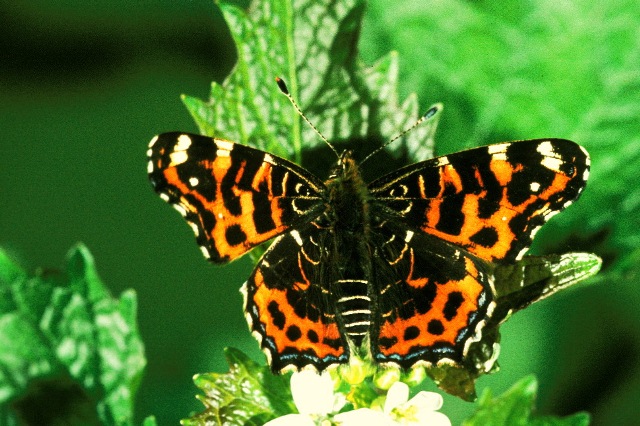 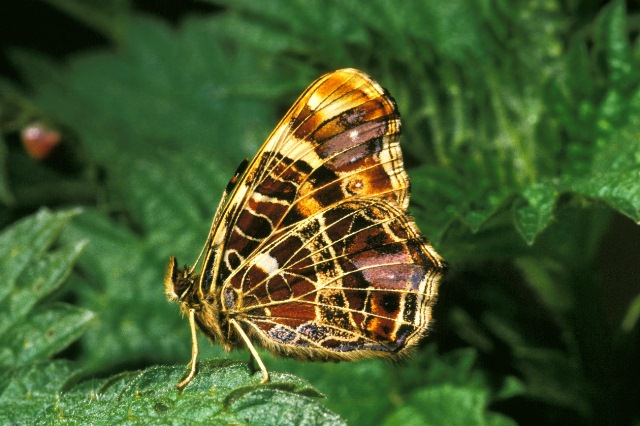 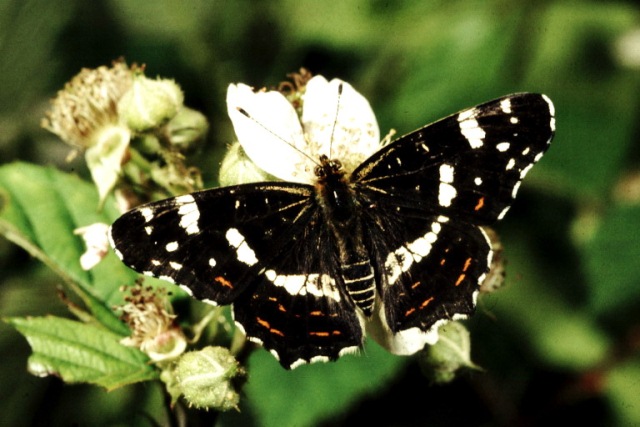 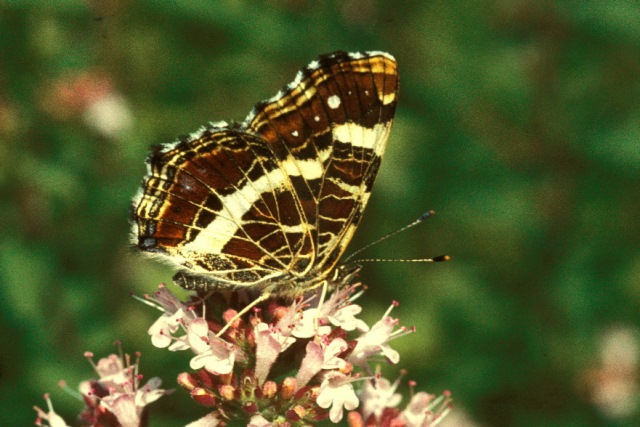
Photographs: Frits Bink ©.
Small or medium sized, wing length in spring generation 17 (16-18) mm, in summer 19 (17-21) mm. Present in all countries of the Benelux, the species has recently expanded its range up to all the coastal islands. It inhabits woods, the countryside and sometimes also urban areas.
Butterfly is on the wing from early-May until early-June and peaks mid-May and again from mid-July until end-August and peaks late-July. The species is known from maritime to severe continental climates, amplitude 7 to 20. Required heat sum 700°d (two broods) and maximum tolerated 2000°d, corresponding climate windows 24 and 38 weeks.
This famous species with its remarkable seasonal dimorphism has been subjected to all kinds of temperature experiments to solve the question of what stimulates its brown spring form Araschnia levana and its black summer form A. levana prorsa.
In England there have been many introduction trials during the last century, but all were unsuccessful. Some recent sighting were considered to be vagrants from France (Asher et al. 2001:314-315).
Ecological characteristics
Behaviour over time
Overwintering: pupa attached to a stalk in the herb layer or any object.
Reproduction: oviposition starts after 3-5 days when the body contains 160 ± 11 eggs (n=4), potential production 1.2 times as much.
Larval feeding periods: 3-4 weeks in summer period from early-May until early-October.
Generations: variable, two or three in a warm summer.
Spreading of risk: flexibility in diapause and also repeated diapause occurs.
Life cycle: egg 5 (4-7) days; larva 23 (17-29) days; pupa 12 (9-15) days and 26-38 weeks in overwintering.
Life span of adult: short, 2 weeks.
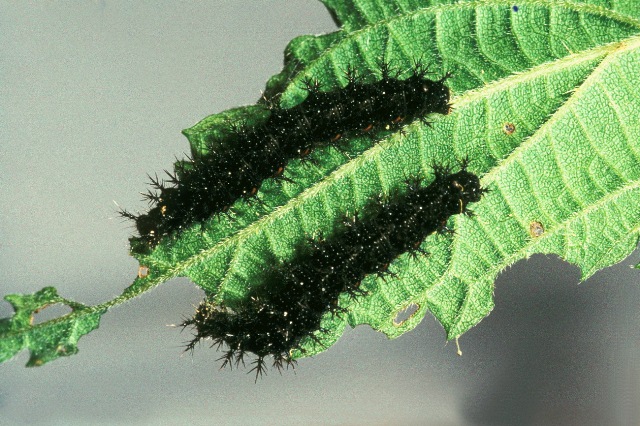 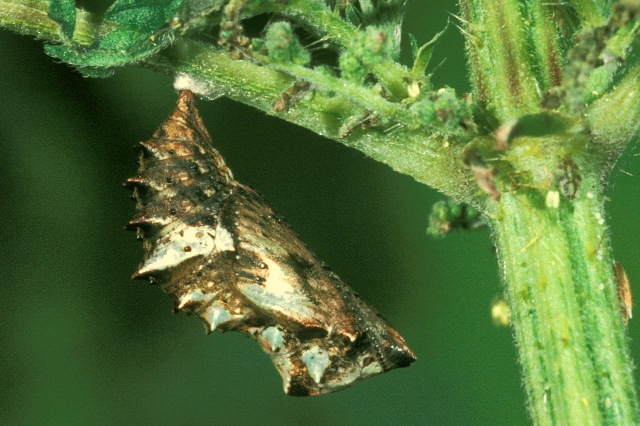
Photographs: Frits Bink ©.
Behaviour in space
From stay-at-home to migrant: nomad, spatial requirement modest.
Finding a mate: male perches, intermittent short patrols.
Orientation in the landscape: gradient from wood or shrub to tall herb vegetation. In spring the female butterfly prefers a sunny open landscape, in summer shaded sites.
Oviposition: the eggs are placed one on top of another in groups of 8-12 together under the leaf of a nettle, altogether producing 66 (54-80) eggs.
Defence
Threats from other organisms: larvae are armoured with spines and are black coloured.
Threats from the environment: vulnerable to drought, larvae and adults occurs mainly in humid environment.
Feeding habits
Adult: nectar of all kind of flowers, prefers umbel shaped inflorescences.
Larva: lives socially in small groups.
Larval foodplants
Plant species: Urticaceae, Urtica dioica.
Journal
Rearing experiment based on specimen from Leersum, garden, Netherlands:
2 August 1980: female captured, laid eggs the same day.
17 August: larvae third instar.
25 August: pupated.
Overwintered indoors.
22 April: first adult appeared.
9 May: another pupa hatched.
5 June: last pupa hatched, the others looked healthy and were fit for a second winter.
15 November: repeated diapause pupae still healthy.
Table 100-1. Results of dissections

Table 100-2. Collection and observation localities
B, Nîsmes, Tiènne-Breumont, 215 m, 50° 04’ 40”N – 4° 32’ 35”E; 28 May 1982.
D, Borkener Paradies, 52° 43’ 29”N – 7° 14’ 36“E; 9 July 2002.
D, Lorch, 300m, 50° 02’ 05”N – 7° 47’ 56”E; 31 July1985.
EST, Endla Nature Reserve, 58° 52 34”N – 26° 16’21”E; 10 July 1999.
EST, Viruna, 58° 28’ 51”N – 23° 58’ 32”E; 5 July 1999.
L, Kautenbach, 258 m, 49° 56’ 25”N – 6° 01’ 34”E; 28 September 2001.
NL, Amerongen, garden, 52° 00’ 01”N – 5° 27’ 34”E; 1975-1986.
NL, Bennekom, garden, 51° 59’ 30”N – 5° 40’ 34”E; 1988-2005.
NL, Leersum, garden, 52° 00’ 29”N – 5° 24’ 04”E; 1975-1986.
NL Voorst, 52° 14’ 21”N – 6° 09’ 34”E; 26 July 2011.
Fig. 100-1. Araschnia levana, phenogram adapted from Bos et al. 2006: 278.
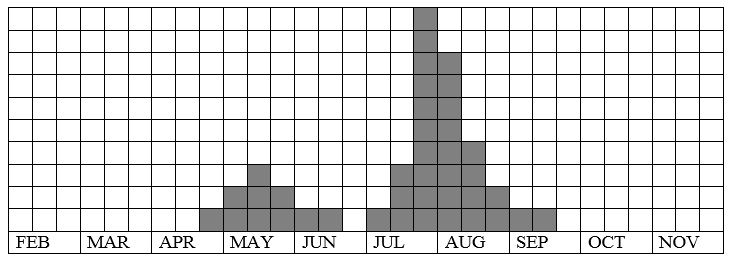
Fig. 100-2. Araschnia levana, habitat characteristics.
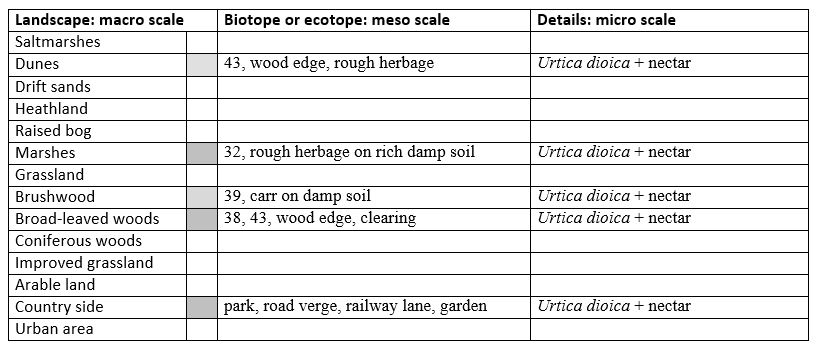
Fig. 100-3. Araschnia levana, climate matrix, heat-sums 700 - 2000°d.
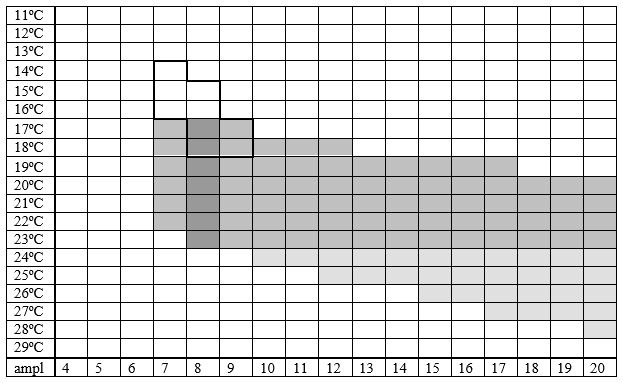
|











